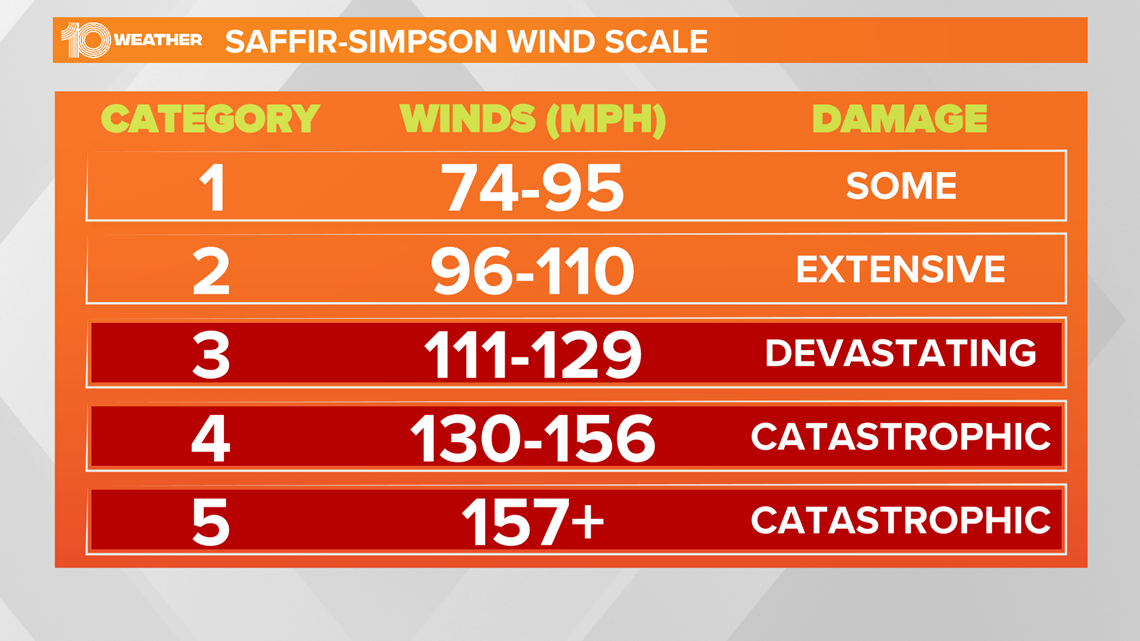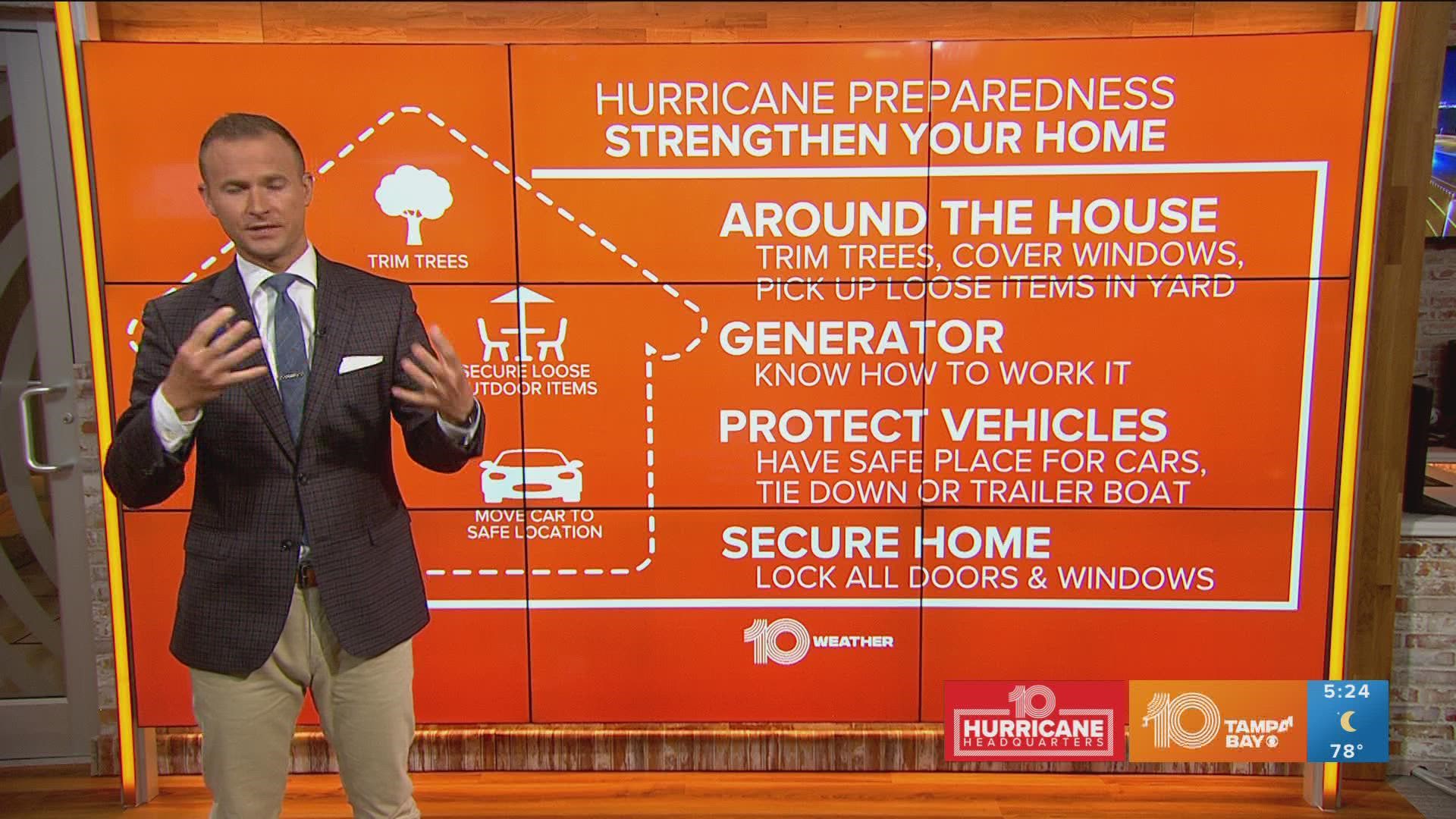ST. PETERSBURG, Fla. — The easiest and most straightforward way to measure a hurricane's strength is to use the Saffir-Simpson scale.
Divided into five categories, the scale designates each hurricane based on its sustained wind speed and estimates what kind of property damage could occur. Category 1, for example, is considered "very dangerous" while a Category 5 storm is "catastrophic."
Hurricanes that are rated Category 3 or higher are known as major hurricanes given their potential to cause devastating to catastrophic wind damage and significant loss of life.
Here's a breakdown of the Saffir-Simpson scale, according to the National Hurricane Center:
Category 1 - 74-95 mph sustained winds: Very dangerous winds will produce some damage
Category 2 - 96-110 mph sustained winds: Extremely dangerous winds will cause extensive damage
Category 3 - 111-129 mph sustained winds: Devastating damage will occur
Category 4 - 130-156 mph sustained winds: Catastrophic damage will occur
Category 5 - 157 mph or higher sustained winds: Catastrophic damage will occur ("a high percentage of framed homes will be destroyed")


A tropical cyclone that hasn't reached hurricane strength is considered a tropical storm (39-73 mph wind) or a weaker tropical depression (less than 38 mph).
Despite what you might see on social media, there is no such thing as a Category 6 storm. The bottom line is a Category 5 storm, whether at 157 mph or Hurricane Allen's 190-mph wind (1980 season), it likely will completely destroy anything in its path.

